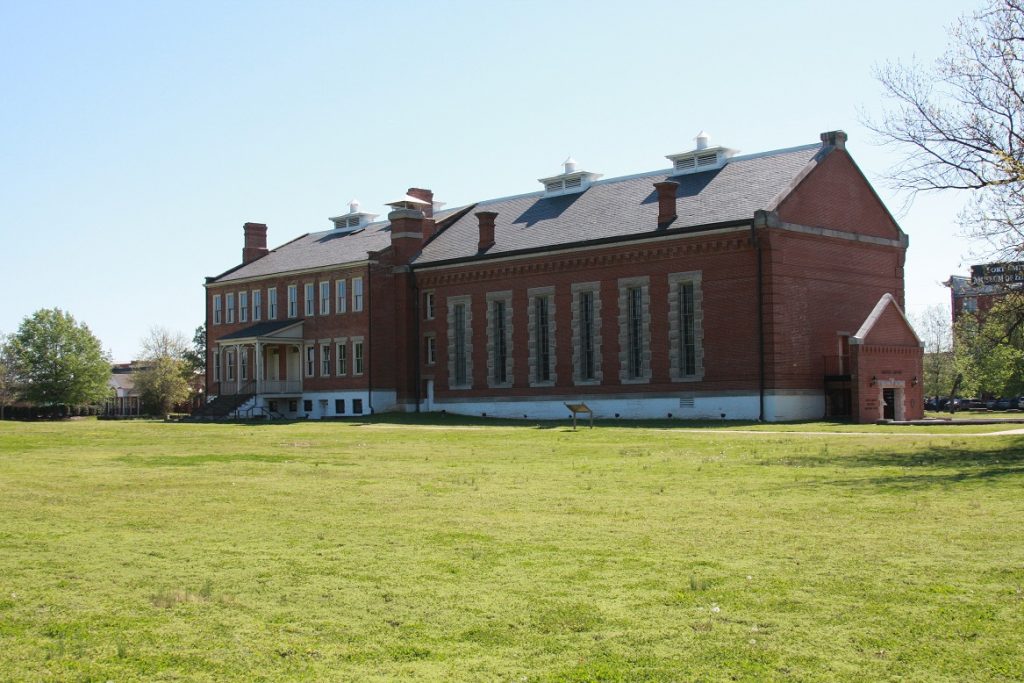April 11, 2023 @ 09:00 CDT
Site Visit #85
Like Fort Scott, which I visited last October, Fort Smith was built along the border between lands settled by whites and lands graciously forced upon the indigenous peoples. At this site, the Arkansas River formed the border between the new state of Arkansas and “Indian Territory”, which one day would become Oklahoma.
Unlike many other forts that I have visited, very little remains of this fort. It was one of the last built in the west using a big, stone wall around the perimeter. That wall is long gone but its location is marked by a stone walkway. Only two original buildings remain, though the location of others, such as officer’s barracks, are marked by stones tracing the foundations.
The original fort was located closer to the Arkansas River on a hill giving good views of the river and lands on its other side. A paved walkway leads from the current fort to the site of the first fort and continues along the banks of the river for a short distance. That first fort, built in 1871, was replaced by a larger fort in 1838.
The main attraction of the Historic Site is the former barracks, courthouse, and jail. This large building contains the park’s Visitor Center with a video on the fort and the history surrounding it. Originally it was just the enlisted barracks but after the Army closed the fort in 1872, it became the courthouse, with the basement turned into a jail. Later, a new jail was built on the second floor as the basement jail was filthy and unsanitary.

Judge Isaac Parker was assigned to Fort Smith by President Grant in 1875 to bring justice and order to a corrupt court. He is credited for doing so quite successfully. Parker gained a nickname as the “Hanging Judge”, sentencing 160 people to the gallows but for the most part, he had no discretion. Federal law mandated the death sentence at the time for murder. Oddly, Parker was personally opposed to the death penalty and was a strong proponent of prison reform.
All in all, this park had one of the better Visitor Centers I have visited. The original basement jail was still intact as was a portion of the second-floor jail. Exhibits covered all periods of the fort’s existence along with the history happening in the surrounding areas. It was located along the “Trail of Tears” – the route used by Cherokee and some other Indian people when they were forced out of their homes in the east. They were constantly promised lands, compensation, and more through treaties that either were honored only briefly or never honored. The only thing guaranteed by the treaties was that they would be broken. The U.S. Supreme Court had actually ruled that the treaties must be honored, but Democratic President Andrew Jackson blatantly ignored the Court’s ruling and ordered more “relocations”—a sad period of American history.
My trip almost ended in the city of Fort Smith. Fortunately, I was not paying attention at the time! I was sitting at a red light on a side street waiting for the green. I glanced away momentarily and did not realize a green right-turn arrow had lit (the main light was still red). When I looked back and saw the green arrow, I started to inch forward, slamming on my brakes when a car coming from the left ran its red light at around 40 mph. Had I been watching the light and gone forward at the moment the arrow came on, I likely would have been broadsided by that car.
Steve